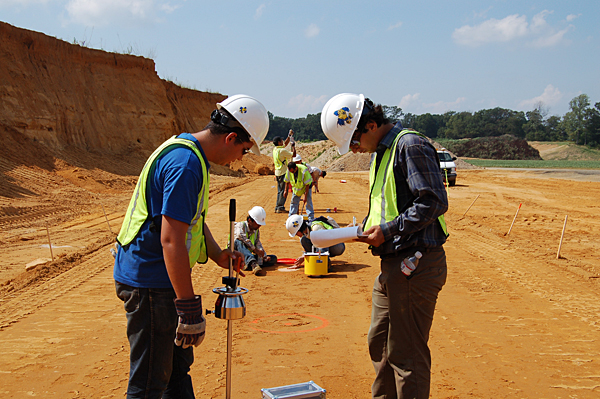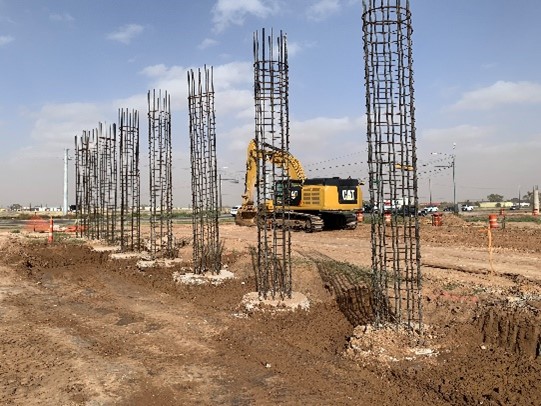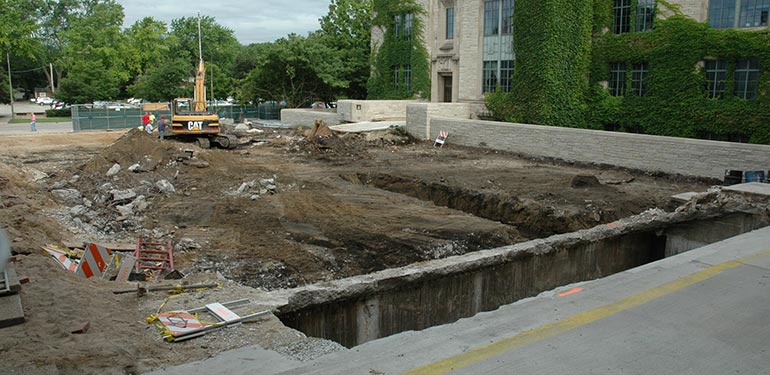How Consulting Engineers Enhance Geotechnical Engineering Projects: Insights Into Their Experience, Methodologies, and Collaborative Approaches
Consulting engineers are pivotal in boosting geotechnical engineering jobs, using their specialized knowledge to navigate the complexities of subsurface conditions. Their collaborative techniques foster interaction amongst diverse task stakeholders, inevitably forming the task's trajectory.
Duty of Consulting Engineers
The competence of getting in touch with designers in geotechnical engineering is fundamental to the effective execution of building and construction jobs. These specialists play a crucial role in assessing soil and rock buildings, which are vital elements influencing style and building and construction decisions. By conducting detailed website examinations, seeking advice from designers collect essential data that educates the layout procedure, guaranteeing projects are developed on secure and appropriate ground.
Consulting designers additionally offer important understandings into risk administration (geotechnical geologist). They identify possible geotechnical threats, such as landslides, soil liquefaction, and negotiation issues, making it possible for stakeholders to apply efficient reduction techniques. Their competence help in maximizing foundation designs, which can lead to significant price financial savings and boosted security
Furthermore, seeking advice from designers function as an important web link in between task proprietors, architects, and contractors. Their capability to equate complex geotechnical data into actionable recommendations promotes partnership and assists in notified decision-making throughout the project lifecycle. This multidisciplinary approach not only enhances job efficiency but also guarantees compliance with governing standards and finest practices.
Trick Techniques in Geotechnical Engineering

One primary approach is website examination, which entails conducting field tests and research laboratory evaluations to gather data on subsurface conditions. Methods such as Standard Penetration Testing (SPT) and Cone Penetration Screening (CPT) are commonly used to examine dirt stratigraphy and stamina. In addition, geophysical techniques, consisting of seismic and electric resistivity surveys, offer non-invasive ways to assess subsurface features.
One more critical technique is numerical modeling, which allows designers to mimic various situations and anticipate how soil-structure communications will certainly act under different loading problems. Finite Element Analysis (FEA) is an usual technique utilized in this context.
Moreover, the style of structures, preserving frameworks, and earthworks relies greatly on these approaches - geotechnical geologist. By incorporating innovative analytical tools with area data, consulting designers can create tailored solutions that deal with specific project obstacles, inevitably adding to the stability and safety of construction projects
Relevance of Dirt Evaluation
Soil evaluation works as a fundamental aspect in geotechnical engineering, giving crucial insights into the physical and chemical homes of soil required for effective building planning. Comprehending soil features is essential for determining its load-bearing ability, drainage habits, and potential for settlement or instability. Comprehensive soil investigations, consisting of sampling and laboratory testing, help identify criteria such as soil type, dampness material, density, and shear strength.
These evaluations educate the selection of appropriate building and construction methods and materials, inevitably affecting project security and long life. Natural dirts might call for different structure designs contrasted to granular dirts, necessitating tailored engineering services. Additionally, soil analysis help in determining contaminants that can present dangers to human health and wellness or the setting, allowing for the growth of reduction methods.
Integrating soil analysis into the very early phases of task advancement helps to reduce unanticipated difficulties, guaranteeing that designers can anticipate and address prospective concerns before they rise. By establishing a thorough understanding of the website conditions, speaking with designers can their website optimize design efficiency and lower prices, thereby enhancing the general success of geotechnical engineering tasks.
Joint Strategies in Jobs
Successful geotechnical tasks usually hinge on joint approaches that combine varied knowledge from various self-controls. Effective partnership among speaking with designers, geologists, ecological researchers, and building experts is critical for attending to intricate challenges and optimizing task outcomes. By leveraging the distinct abilities and expertise of each team member, projects can gain from a holistic understanding of the website problems, regulatory needs, and design restraints.
Normal interaction and interdisciplinary meetings facilitate the sharing of insights and promote a society of synergy. These collaborative initiatives make it possible for the recognition of possible dangers early in the task lifecycle, allowing for prompt reduction methods. Incorporating responses from stakeholders, including regional areas and governing agencies, ensures that all perspectives are considered, boosting job acceptance and compliance.
Furthermore, the assimilation of sophisticated modern technologies, such as Geographic Info Solution (GIS) and Building Info Modeling (BIM), more boosts partnership. These devices permit for the real-time sharing of data and visualization of geotechnical problems, promoting notified decision-making. Eventually, a collaborative approach not only enhances project implementation but additionally lays the structure for ingenious solutions to intricate geotechnical engineering obstacles.
Effect On Project End Results

Consulting engineers use advanced techniques such as threat assessment and predictive modeling, which enhance the precision of job forecasts. Their ability to incorporate innovative innovations, like geotechnical instrumentation and information analytics, even more fine-tunes the style and construction procedures. Consequently, tasks experience enhanced efficiency, reduced expenses, and reduced hold-ups.
In addition, cultivating efficient communication and cooperation among staff member boosts problem-solving abilities. When challenges develop, a united front enables for swift recognition of solutions, avoiding potential troubles. Eventually, the joint efforts of consulting engineers add to better outcomes, making certain that projects fulfill both governing criteria and customer expectations.
Verdict
